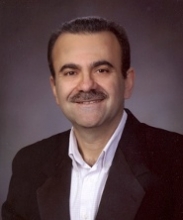MAE Seminar: Piezoelectric Energy Harvesting from Aeroelastic Vibrations

Director of the Center for Energy Harvesting Materials and Systems
Department of Biomedical Engineering and Mechanics
Virginia Tech
Abstract:
Aeroelastic vibrations are a common occurrence in aeronautical applications, civil structures and mechanical systems. In general, these vibrations are undesirable. On the other hand, they have been proposed as a means to harvest energy that can be used to operate low-power consumption devices, such as sensors and actuators or replace small batteries that have a finite life span or would require hard and expensive maintenance. Of the different options, which include electromagnetic, electrostatic, and piezoelectric transduction, the piezoelectric one has received the significant consideration because of its capability to harvest energy over a wide range of frequencies, its ease of application, and integration in a small volume. In the past, we have considered different aeroelastic systems as possible candidates for energy harvesting. These included a wing undergoing limit cycle oscillations, vortex-induced vibrations of a circular cylinder and galloping structures.
In this talk, we will present an energy harvester that exploits the fact that large deformations can reduce the flutter speed of a cantilever beam. Particularly, we subject a flexible composite beam, held at static angle of attack at the beam root, to airflow. This setup has the advantage of dispensing of the secondary structure needed to induce the beam vibration as in previous setups. By setting the beam at a non-zero angle of attack, it is subjected to a differential aerodynamic loading, which results in a uniform static deflection. When this deflection is large enough, the geometric nonlinearities affect the beam's stiffness and induce a change in its natural frequencies, which, in turn cause the torsional and second bending frequencies to coalesce. This coalescence results in self-induced flutter of the beam. Beyond this bifurcation, the combination of the static deflection and geometric and aerodynamic nonlinearities causes sustained limit-cycle oscillations that can be efficiently exploited for energy harvesting (LCO). Details of the experimental setup will be given. The effects of the preset angle of attack, wind speed and load resistance on the levels of the harvested energy from self-induced flutter of a composite beam. An overall assessment of the potential of exploiting aeroelastic instabilities for energy harvesting will be presented.
Bio:
Muhammad R. Hajj is a Professor of Biomedical Engineering and Mechanics and the Associate Dean of the Graduate School at Virginia Tech. He is also the Director of the Center for Energy Harvesting Materials and Systems (CEHMS). This center is a consortium of major research universities, industry partners and commercial and government organizations and is sponsored through the National Science Foundation Industry/University Cooperative Research Centers (I/UCRC) program with the aim of developing interdisciplinary strengths in science and technology issues related to the sustainable development of energy solutions.
Dr. Hajj is a Fellow of the Engineering Mechanics Institute and an elected member of its board of governors. He has chaired several conferences as Organizing Secretary of the Third International Colloquium on Bluff Body Aerodynamics and Applications (BBAA III) in 1996, Conference Chair of the 18th Engineering Mechanics Division Conference of the American Society of Civil Engineering in 2007, and Technical Program Chair of the 2009 Joint ASCE-ASME-SES Conference on Mechanics and Materials in 2009.
Dr. Hajj received a B. Eng. degree (with distinction) from the American University of Beirut in 1983. He received a M.Sc. and Ph.D. degrees from the University of Texas at Austin in 1985 and 1990. He joined Virginia Tech in 1992 after spending two years as a Postdoctoral Scholar at the University of Texas at Austin.
Share
Upcoming Events
-
MAE 298 SEMINAR: Biomechanics of Rotator Cuff
-
CBE 298 Seminar: Micro- and Nanofluidic Systems for Molecular Biosensing, Nanotoxicity, and Optogenetics
-
MSE Special Seminar: Architecting 3D Complex Materials for Sustainability
-
MSE Special Seminar: Decarbonizing Industries for a Climate-resilient Future - From Renewable Energy to Sustainable Material Recovery
-
CEE Seminar: BIM and the Digital Twin
